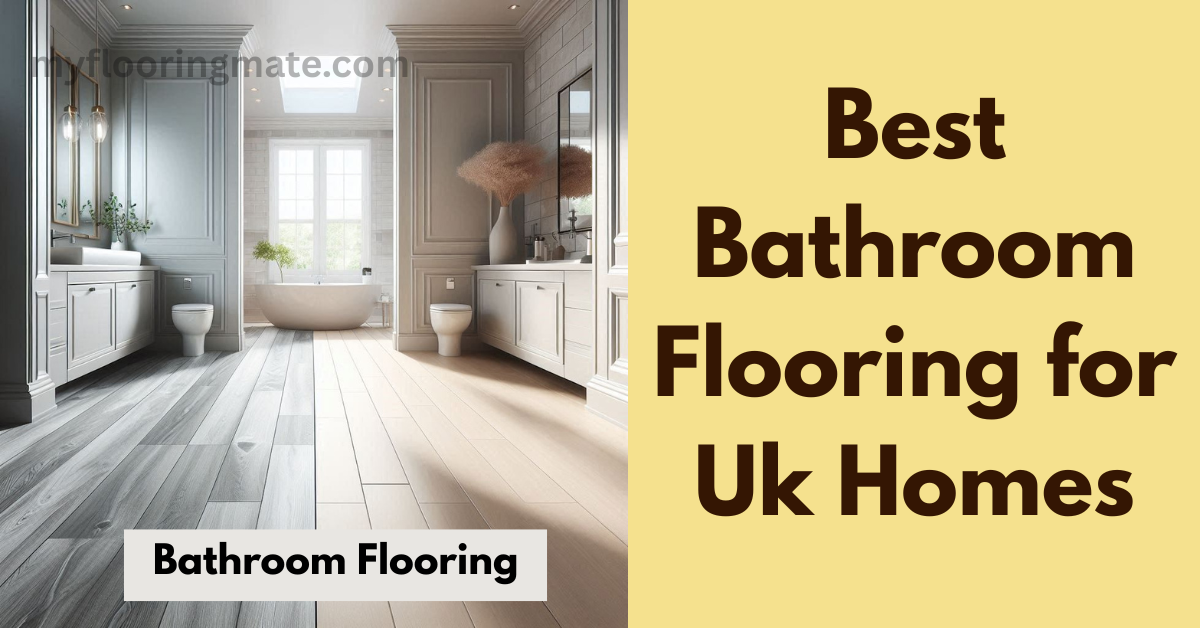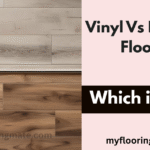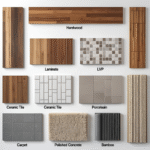Introduction
Choosing the best bathroom flooring for your home isn’t just about looks — it’s about finding a surface that can handle daily moisture, resist slipping, and still hold up over time. After working with countless homeowners across the UK, I can tell you: the right flooring can completely transform how your bathroom feels and functions.
Bathrooms are unique spaces. They deal with constant humidity, splashes, and wet feet — so not every type of flooring will do the job. You need something that’s not only waterproof and slip-resistant, but also fits your budget and style.
In this guide, I’ll walk you through the top flooring options for UK bathrooms, explain the pros and cons of each, and help you choose the one that fits your space best — whether you’re renovating a compact ensuite or upgrading a busy family bathroom.
By the end, you’ll know exactly which bathroom flooring is right for your needs — with expert insight, not just surface-level advice.
What to Consider When Choosing Bathroom Flooring
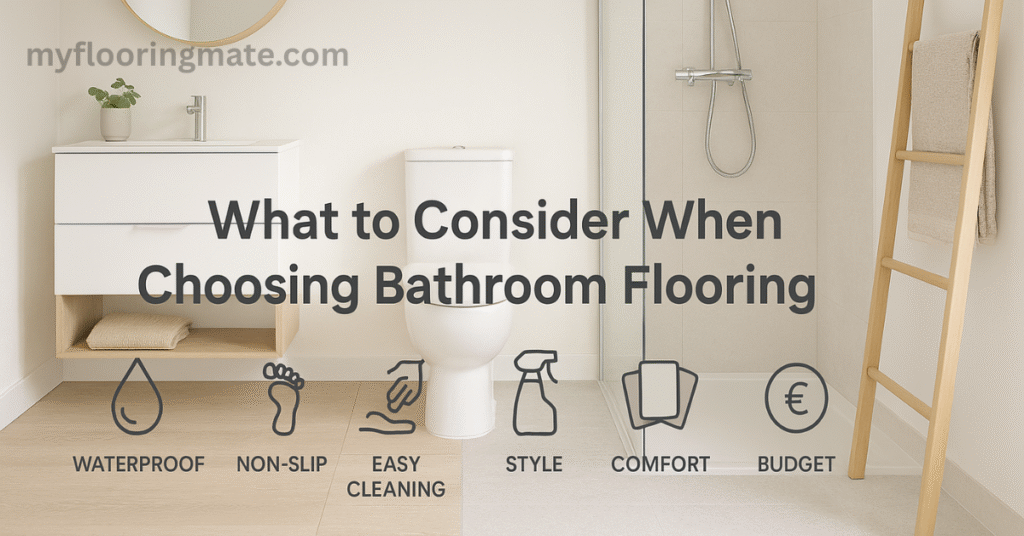
Before you pick a material based on looks alone, it’s important to think about how your bathroom actually functions day to day. From splashes and steam to slipping hazards and cleaning routines, your flooring needs to do more than just match your tiles.
Here are the key things to keep in mind when choosing the best bathroom flooring:
1. Water Resistance
Your bathroom floor is going to get wet — often. Choosing a waterproof flooring option is essential to avoid swelling, warping, or mould over time. Materials like luxury vinyl tile (LVT), sheet vinyl, and porcelain tiles are designed to handle heavy moisture without damage.
2. Slip Resistance
Safety matters, especially in family homes. Wet floors can be slippery, so look for slip-resistant bathroom flooring that offers a bit of texture or grip. Some tiles come with anti-slip ratings, and many LVT options are designed with added traction.
3. Durability
Your bathroom flooring needs to stand up to daily wear — from damp towels to kids’ bath time chaos. Opt for a surface that won’t easily scratch, tear, or wear down. Porcelain tiles and stone are top performers in terms of long-term durability, while LVT offers a solid balance of toughness and comfort.
4. Comfort Underfoot
Cold tiles first thing in the morning? Not ideal. If comfort is a priority, consider vinyl or engineered wood — or pair hard surfaces like tile with underfloor heating for a warmer experience.
5. Maintenance & Cleaning
Nobody wants to spend hours scrubbing grout or sealing surfaces. Choose a low-maintenance bathroom flooring that can be quickly wiped clean, especially in busy households. Vinyl flooring wins here — it’s easy to mop, doesn’t stain easily, and requires almost no upkeep.
6. Style & Design
Your bathroom should feel like part of your home’s design, not an afterthought. Flooring plays a big role in this. Whether you prefer a modern spa look, rustic charm, or sleek minimalism, there are flooring options that mimic natural wood, stone, or concrete — without the maintenance headaches.
7. Budget
Flooring costs can vary widely. You don’t need to overspend to get great results — there are excellent budget-friendly bathroom flooring options available. We’ll cover cost breakdowns later, but materials like sheet vinyl or basic ceramic tiles offer great value without cutting corners on performance.
Pro Tip:
If your bathroom is prone to puddles — especially around the bath or shower — it’s worth looking for flooring with sealed edges or pairing your floor choice with waterproof skirting or trims for extra protection.
Top 6 Best Bathroom Flooring Options (With Pros & Cons)
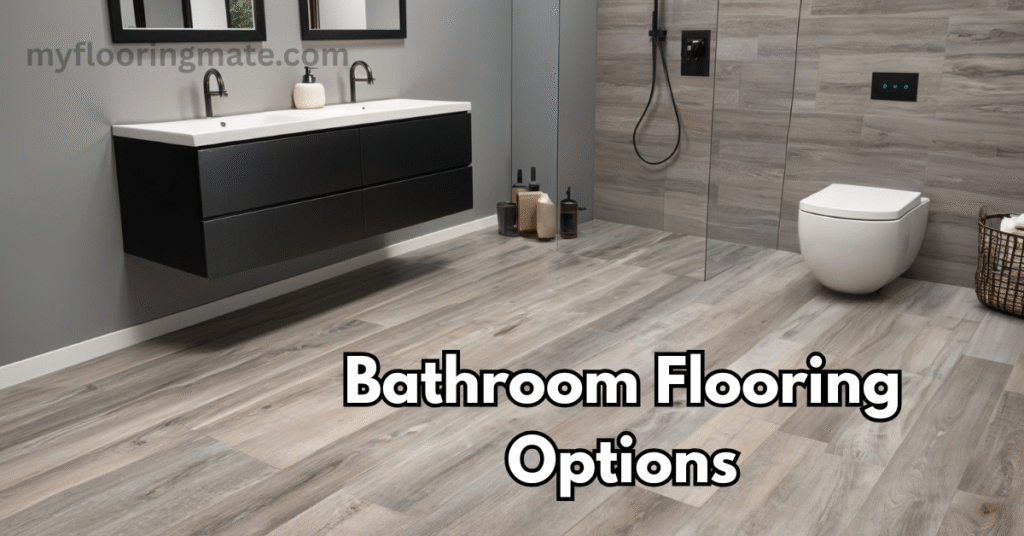
When you’re renovating a bathroom, flooring isn’t something you want to get wrong. It needs to handle daily moisture, be safe underfoot, and fit the style of your home. Over the years, I’ve worked with all types of materials — and I’ve seen what lasts and what doesn’t in real UK homes.
Below are six of the best bathroom flooring options available right now, each with its strengths and a few things to be aware of. Whether you’re looking for durability, easy maintenance, or something stylish on a budget, you’ll find the right fit here.
1. Luxury Vinyl Tile (LVT)
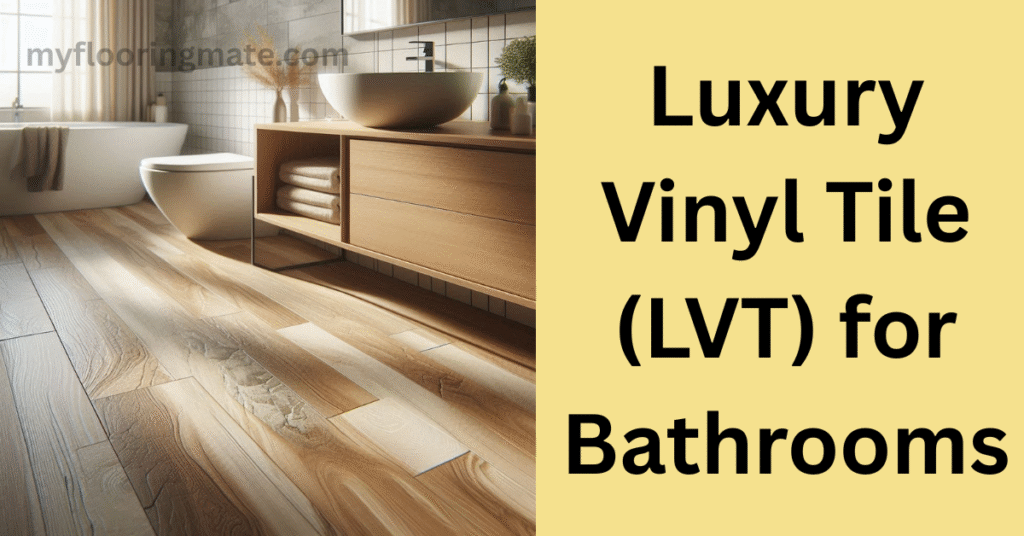
Luxury Vinyl Tile (LVT) has become one of the most popular choices for modern UK bathrooms — and for good reason. It’s designed to look like natural wood or stone but offers far better performance in wet areas.
Pros:
- Completely waterproof — ideal for bathrooms and en-suites
- Feels warmer and softer underfoot compared to tiles
- Available in a lot of designs and finishes
- Low maintenance and easy to clean
- Suitable for DIY or professional installation
Cons:
- Can be damaged by sharp objects or heavy furniture
- less durable than ceramic or stone over long periods
Expert Tip:
If you want that luxury look without the high cost or hassle, LVT is one of the best bathroom flooring choices you can make.
2. Porcelain or Ceramic Tiles
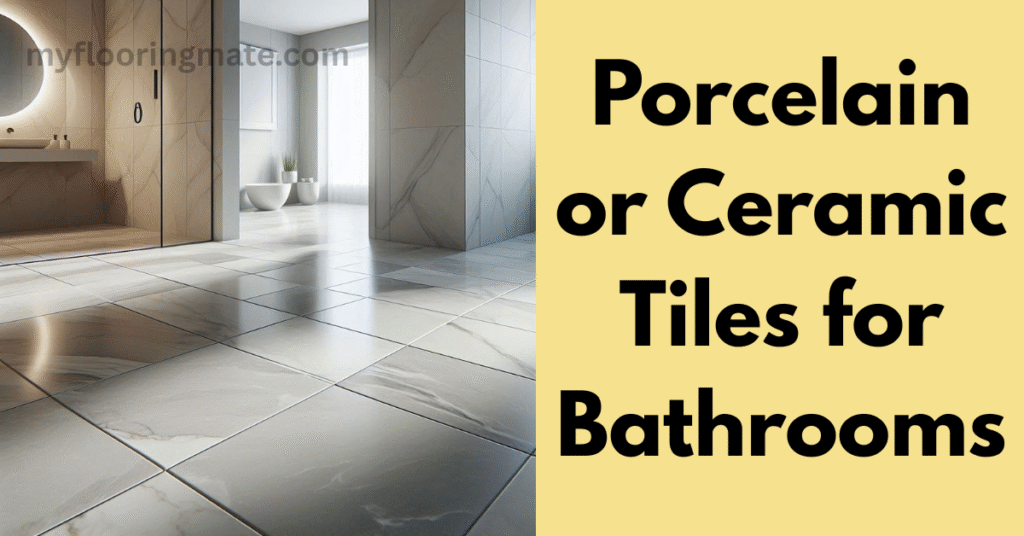
Still one of the most classic and trusted choices, porcelain and ceramic tiles are widely used in UK bathrooms. They’re tough, reliable, and perfect for wet environments — as long as you don’t mind cold feet in winter.
Pros:
- Highly water-resistant and long-lasting
- Easy to match with wall tiles and design schemes
- Great for underfloor heating
- Endless design options — from marble-look to modern concrete finishes
Cons:
- Feels cold and hard underfoot unless heated
- Grout lines can stain or develop mould if not maintained
- Slippery when wet unless you choose textured tiles
Expert Tip:
For bathrooms that see a lot of traffic or heavy moisture, porcelain tiles are a rock-solid, time-tested choice — just make sure to seal the grout properly.
3. Sheet Vinyl Flooring
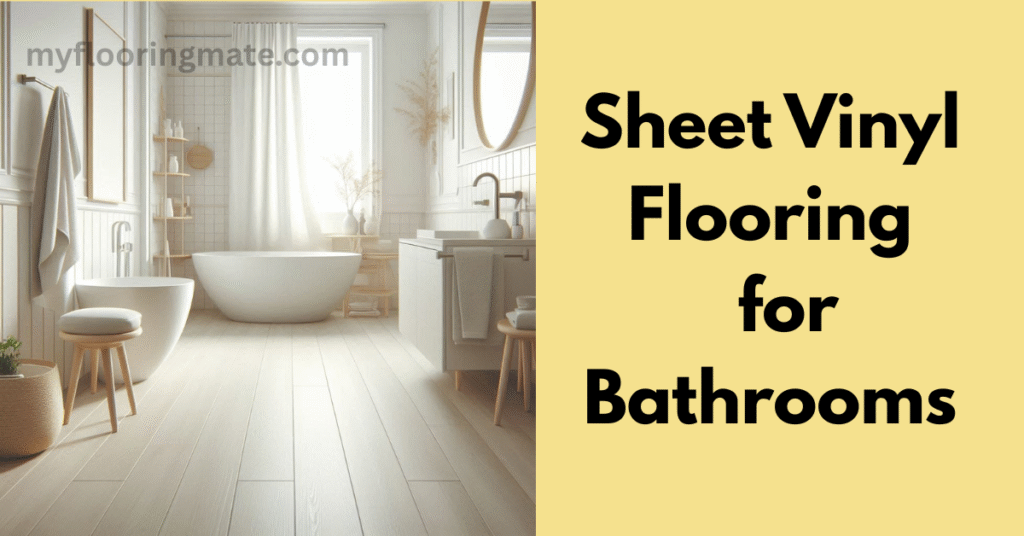
If you’re on a tighter budget but still want full waterproof protection, sheet vinyl is a practical and affordable option. It comes in large, seamless rolls — which means fewer joints where water can get in.
Pros:
- 100% waterproof bathroom flooring
- Cushioned feel underfoot, great for families or elderly users
- Very easy to clean — no grout or sealing required
- Fast and straightforward to install
Cons:
- Fewer design choices than LVT
- Can tear or dent if furniture isn’t protected
- Requires a perfectly smooth subfloor
Expert Tip:
For rental properties or quick renovations, sheet vinyl offers excellent value without sacrificing performance.
4. Waterproof Laminate Flooring
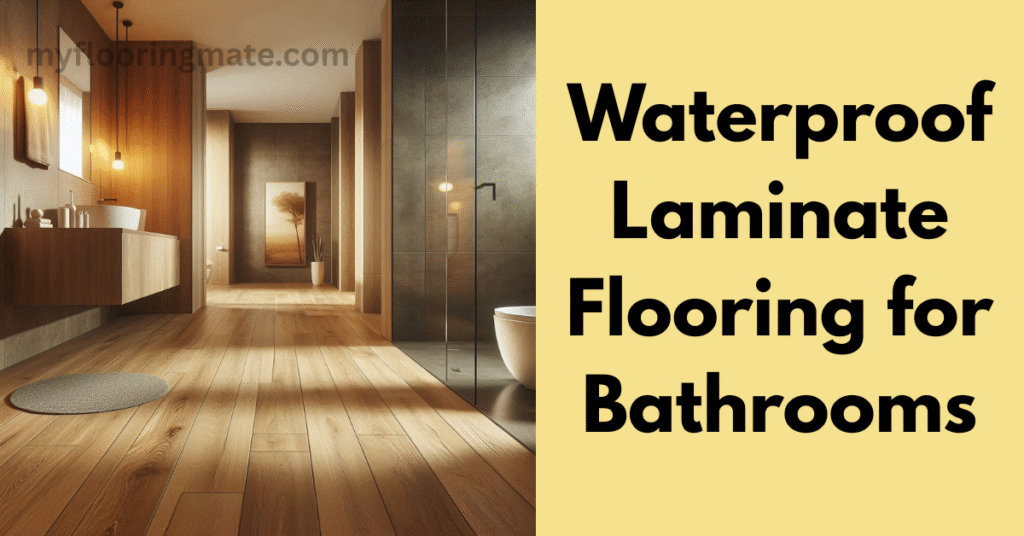
Laminate has a reputation for being unsuitable for wet rooms, but the newer waterproof laminate flooring options are changing that. They’re made with tighter locking systems and water-resistant coatings.
Pros:
- Realistic wood-look designs
- Easier to install than tile
- Budget-friendly alternative to engineered wood
Cons:
- Only water-resistant, not fully waterproof
- Edges can swell if water gets underneath
- Needs careful sealing and installation to last
Expert Tip:
Laminate flooring can work well in bathrooms with good ventilation — but I only recommend the waterproof versions and proper edge sealing.
5. Natural Stone (Slate, Marble, Limestone)
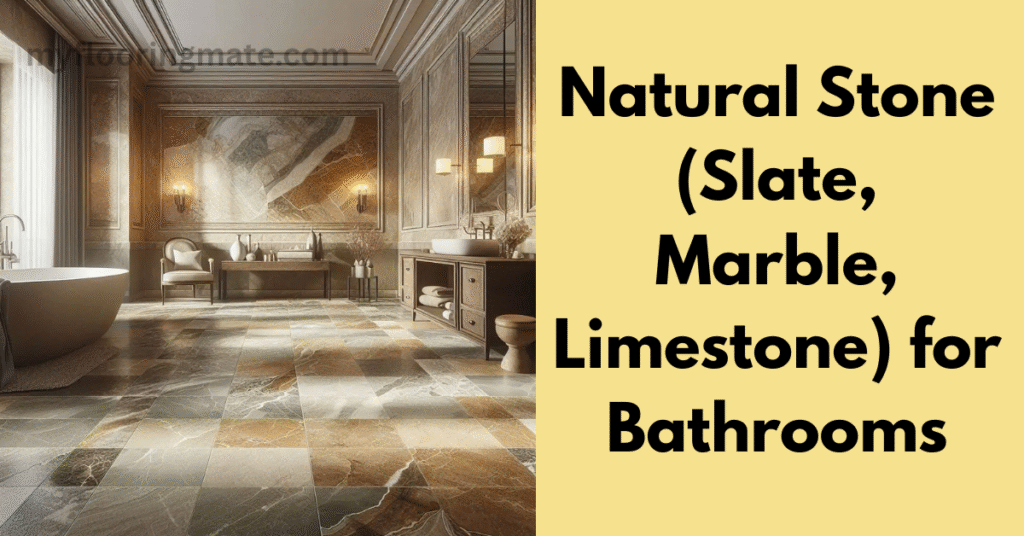
If you’re going for a luxury look, natural stone flooring adds timeless beauty and real texture. It’s a premium choice, but one that requires a bit more maintenance and a higher budget.
Pros:
- Elegant and high-end appearance
- Extremely durable when properly sealed
- Works well with underfloor heating
- Adds value to your home
Cons:
- High upfront cost
- Requires regular sealing to stay water-resistant
- Can feel cold and be slippery without treatment
Expert Tip:
Stone flooring works best in larger or designer bathrooms where visual impact matters. Just be prepared for the upkeep.
6. Engineered Wood (Use With Caution)
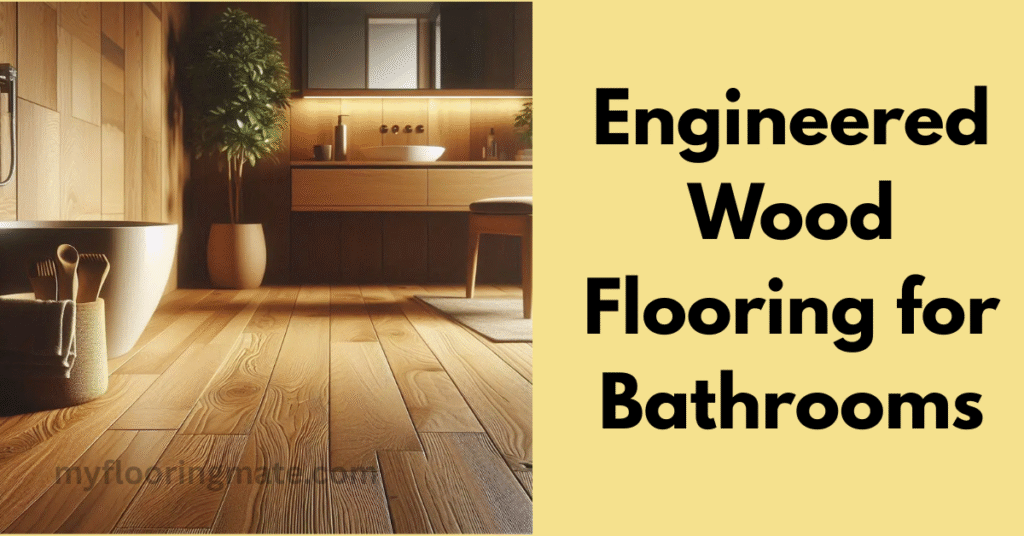
Many people love the warmth and texture of real wood, and engineered wood flooring is more stable than solid hardwood. But it’s still not ideal for bathrooms with high moisture unless you’re very careful.
Pros:
- Natural look that brings warmth to the room
- Softer underfoot than tile or stone
- Can be sanded and refinished (depending on thickness)
Cons:
- Not fully waterproof — vulnerable at joints and edges
- Needs sealing and consistent maintenance
- Risky for high-humidity bathrooms
Expert Tip:
Use engineered wood only in well-ventilated bathrooms or powder rooms. Avoid it near showers or baths where splashes are common.
Best Bathroom Flooring by Need & Scenario
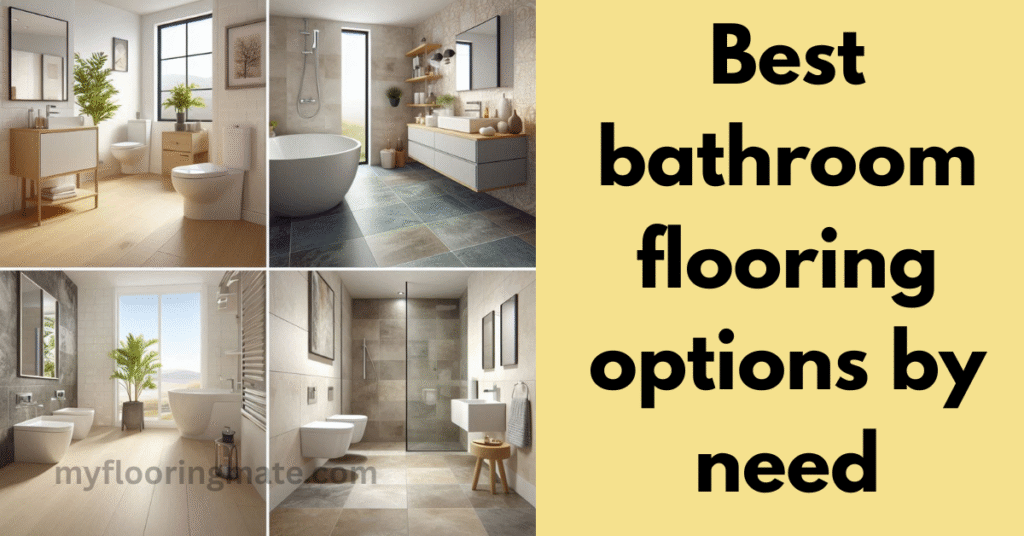
There’s no one-size-fits-all answer when it comes to the best bathroom flooring — what works in a large family home might not suit a compact en-suite or rental property. Based on years of hands-on experience, here’s how to choose the right flooring depending on your specific needs.
Best Flooring for Small Bathrooms
In tighter spaces, you want flooring that makes the room feel open, is easy to install, and won’t overwhelm the design.
Top choice:
- Luxury Vinyl Tile (LVT) — Slim profiles, realistic finishes, and clean edges make a small bathroom feel bigger.
- Sheet Vinyl — Seamless and budget-friendly with no joins, which helps keep the space looking tidy and modern.
Why it works:
Both options are fully waterproof and available in lighter shades that reflect light — perfect for making small bathrooms feel more spacious.
Best Flooring for Family Bathrooms
Family bathrooms see it all — splashes, muddy feet, toys in the tub, and everything in between. You need flooring that’s tough, safe, and easy to clean.
Top choice:
- Porcelain Tiles — Highly durable and resistant to scratches, spills, and moisture. Choose a textured finish for extra grip.
- LVT — Softer and warmer underfoot for young children, and it handles messes without complaint.
Why it works:
Both are practical and reliable. Slip-resistant bathroom flooring is especially important for family spaces, and these materials deliver on safety and function.
Best Flooring on a Budget
You don’t have to break the bank to get smart, stylish, and waterproof floors. The key is finding a material that offers long-term value without costly upkeep.
Top choice:
- Sheet Vinyl Flooring — One of the most cost-effective choices, especially for quick renovations or landlord properties.
- Budget Ceramic Tiles — Durable and easy to find, especially in neutral styles.
Why it works:
Affordable doesn’t mean poor quality. These options still offer solid performance and can be upgraded later if needed.
Best Flooring for a Luxury Bathroom
If you’re going for a high-end look, your bathroom flooring should feel just as refined as the rest of the space.
Top choice:
- Natural Stone (like marble, slate, or limestone) — A timeless, elegant material that adds instant character.
- High-end LVT — Some premium vinyl tiles now offer ultra-realistic finishes that look just like stone or wood — without the upkeep.
Why it works:
Both give you a beautiful finish, but natural stone flooring is the real deal. Just remember: it comes with a higher price tag and needs proper maintenance.
Best for DIY Installation
Want to save on fitting costs and tackle your flooring as a DIY project? Some materials are much easier to work with than others.
Top choice:
- LVT (click-lock style) — Straightforward to install with a bit of prep and patience.
- Sheet Vinyl — Lightweight and fast to lay in one piece, especially in smaller rooms.
Why it works:
These flooring types are beginner-friendly and don’t require expensive tools or professional skills — just a clean subfloor and careful measurements.
Expert Insight:
When choosing the best flooring for your bathroom, always match the material to the way the space is used. A guest toilet won’t need the same durability as a busy family bath, and a luxury en-suite calls for a different finish than a utility space.
Bathroom Flooring to Avoid (And Why)
Not every flooring material is suited for wet, humid environments — no matter how stylish or affordable it looks. Over the years, I’ve seen some costly mistakes when the wrong type of flooring was installed in a bathroom. Here are a few options I don’t recommend using — and why they’re best avoided.
Solid Hardwood Flooring
While beautiful in living areas, solid wood flooring is a poor fit for bathrooms. Moisture causes it to expand, warp, and eventually rot — even with sealing.
Why to avoid it:
- Not waterproof
- Easily damaged by steam and spills
- Needs constant maintenance and careful cleaning
Better alternative:
Use engineered wood or LVT if you want the wood look with better performance in moist conditions.
Carpet
While some might consider carpet for bathroom floors, it’s far from practical. Carpet tends to hold onto moisture, which creates the perfect environment for bacteria and mould to develop. Plus, it’s very difficult to keep clean and dry in a damp bathroom setting.
Why to avoid it:
- Soaks up water like a sponge
- Encourages mould and mildew
- Very difficult to dry and clean
Better alternative:
Choose a soft-feel vinyl flooring for warmth and comfort without the risk.
Standard Laminate Flooring
Unless it’s explicitly labelled as waterproof laminate, traditional laminate flooring should never be used in bathrooms. Water can seep into the joints and cause swelling or bubbling.
Why to avoid it:
- Prone to water damage
- Joints and edges can lift or warp
- Won’t last in high-humidity areas
Better alternative:
Go for waterproof laminate or click-lock LVT designed for wet areas.
Unsealed Stone or Tile
Natural materials like limestone or terracotta tiles can be used in bathrooms, but only if sealed properly. Without a sealant, they absorb water and stain easily.
Why to avoid it (if unsealed):
- Porous surfaces = water damage
- High maintenance
- Slippery when wet
Better alternative:
If you love natural textures, choose sealed natural stone or porcelain tiles with a slip-resistant finish.
Quick Tip:
If a flooring product doesn’t clearly state it’s waterproof or suitable for bathroom use, it probably isn’t. Always check the manufacturer’s guidance before installing anything in a wet space.
Cost Comparison of Bathroom Flooring in the UK (2025)
Understanding the cost of different flooring options is key to planning your bathroom project. Costs vary depending on materials, installation complexity, and the size of your space. Here’s a simple breakdown of typical prices you can expect in the UK for 2025:
| Flooring Type | Material Cost per m² | Installation Cost per m² | Maintenance |
| Luxury Vinyl Tile (LVT) | £20 – £40 | £15 – £25 | Low — easy to clean |
| Porcelain & Ceramic Tiles | £25 – £60 | £25 – £40 | Medium — grout upkeep |
| Sheet Vinyl | £10 – £25 | £10 – £20 | Low — simple cleaning |
| Waterproof Laminate | £20 – £35 | £15 – £25 | Medium — careful maintenance |
| Natural Stone | £40 – £100+ | £30 – £50+ | High — sealing required |
| Engineered Wood | £30 – £50 | £20 – £40 | Medium — sealing & upkeep |
What Influences Cost?
- Room size: Larger bathrooms increase material and labour costs
- Subfloor preparation: Uneven or damaged subfloors need fixing before installation
- Complex patterns or layouts: Diagonal tiles or intricate designs can add to fitting time
- Underfloor heating: Some flooring types require special installation with heating systems
Pro Tip:
While some flooring materials come with a higher upfront cost, their durability and low maintenance can save you money in the long run. For example, LVT and porcelain tiles often outlast cheaper options, reducing the need for early replacement.
Bathroom Flooring Installation Tips (DIY vs Pro)
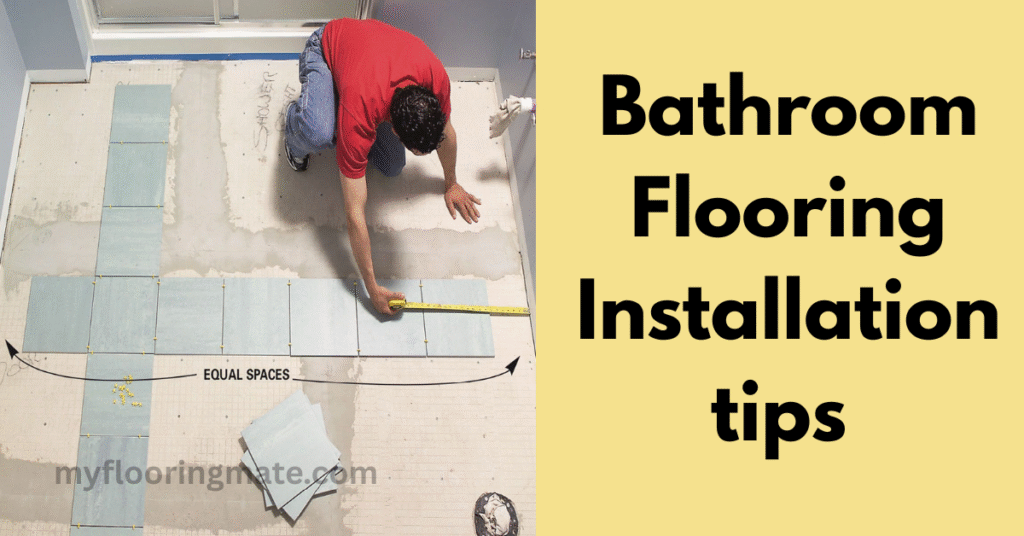
Choosing the right flooring is only half the battle — how you install it makes all the difference in how long it lasts and how good it looks. Some bathroom flooring types are easier to lay yourself, while others really need a pro’s touch to get it right.
DIY Installation: When It Works Best
Good options for DIY:
- Luxury Vinyl Tile (LVT) with click-lock systems
- Sheet vinyl in smaller bathrooms
- Waterproof laminate with simple locking edges
Why DIY?
- Saves you money on labour costs
- Gives you control over timing and quality
- Modern flooring options are often designed with DIY in mind
Tips for success:
- Make sure your subfloor is perfectly clean, level, and dry
- Measure carefully — once cutted wrong, its gone
- Take your time around corners and tricky edges
- Use the right tools (utility knife for vinyl, spacers for tiles, etc.)
When to Hire a Professional
Flooring types best left to pros:
- Porcelain and ceramic tiles — requires precise cutting, grouting, and sealing
- Natural stone — heavy, brittle, and often irregular shapes
- Bathrooms with complex layouts or large areas
Why hire a pro?
- Ensures long-lasting, professional finish
- Avoids costly mistakes like uneven surfaces or water leaks
- Saves time and stress if you’re not confident with tools or techniques
Quick Pro Tip:
No matter who installs your flooring, invest in good-quality underlay and waterproof membranes where needed. These layers protect your floor from moisture damage and improve comfort.
Frequently Asked Questions About Bathroom Flooring
1. What is the best waterproof flooring for bathrooms?
For UK bathrooms, luxury vinyl tile (LVT) stands out as a top choice. It’s 100% waterproof, comfortable underfoot, and available in a variety of realistic wood and stone effects. Porcelain tiles are also excellent, offering durability and water resistance, though they can be colder and harder underfoot compared to vinyl options.
2. Can you use laminate flooring in the bathroom?
Traditional laminate flooring isn’t recommended for bathrooms due to its susceptibility to moisture damage. However, waterproof laminate options are now available, designed specifically for wet areas. Ensure you choose a product explicitly labelled as waterproof and follow the manufacturer’s installation guidelines.
3. What’s the most cost-effective bathroom flooring option?
Vinyl sheet flooring offers a budget-friendly solution without compromising on water resistance. It’s easy to install, especially in smaller bathrooms, and provides a seamless surface that helps prevent water seepage.
4. How much does bathroom flooring cost in the UK?
Costs vary based on material and quality. On average:
- Vinyl flooring: £10–£50 per m²
- Ceramic tiles: £15–£25 per m²
- Porcelain tiles: £25–£50 per m²
- Natural stone: £40–£80+ per m²
Installation costs are additional and can range from £5 to £15 per m², depending on complexity.
5. Is underfloor heating compatible with bathroom flooring?
Yes, many bathroom flooring options are compatible with underfloor heating. Porcelain tiles, engineered wood, and LVT are popular choices that work well with underfloor systems, providing warmth and comfort, especially during colder months.
6. How do I maintain my bathroom flooring?
Maintenance varies by material:
- Vinyl and LVT: Regular sweeping and occasional mopping with a mild detergent.
- Porcelain and ceramic tiles: Clean grout lines regularly and use a pH-neutral cleaner.
- Natural stone: Seal periodically to prevent staining and use cleaners suitable for stone surfaces.
Always follow the manufacturer’s care instructions to prolong the life of your flooring.
Conclusion
Choosing the best bathroom flooring is about balancing style, durability, safety, and budget — all while making sure your floor can handle the wet, humid conditions unique to bathrooms. From the versatile, waterproof charm of luxury vinyl tile (LVT) to the timeless appeal of porcelain tiles and the affordability of sheet vinyl, there’s a perfect option for every UK home and bathroom style.
Remember, the right flooring doesn’t just look good — it keeps your family safe with slip-resistant surfaces, stands up to moisture without damage, and is simple to maintain for years to come. Whether you’re renovating a small ensuite or upgrading a large family bathroom, take the time to choose wisely.
If you’re still unsure, consider your bathroom’s specific needs, budget, and how much DIY work you’re comfortable with — and don’t hesitate to reach out to flooring professionals for advice.
If you like this post check our latest post on:
